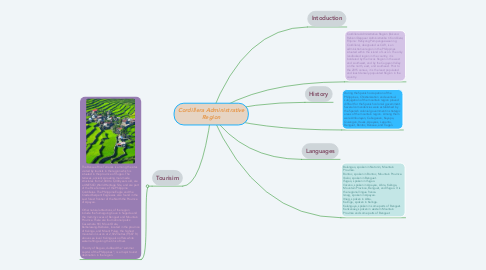Cordillera Administrative Region
by Rachel Leah Quiogue

1. Tourisim
1.1. The Banaue Rice Terraces is among the sites visited by tourists in the region which is situated in the province of Ifugao. The terraces, ancient sprawling man-made structures from 2,000 to 6,000 years old, are a UNESCO World Heritage Site, and are part of the Rice Terraces of the Philippine Cordilleras. The Philippine Eagle and the Crested-Serpent Eagle was also found in the Last forest frontier of the North the Province of Apayao. Other natural attractions of the region include the Sumaguing Cave in Sagada and the mummy caves of Benguet and Mountain Province. There are four national parks: Cassamata Hill, Mount Data, Balbalasang-Balbalan, located in the province of Kalinga, and Mount Pulag, the highest mountain in Luzon at 2,922 metres (9,587 ft) above sea level. Kalinga also offers white water rafting along the Chico River. The city of Baguio, dubbed the "summer capital of the Philippines", is a major tourist destination in the region.
2. Balangao, spoken in Natonin, Mountain Province. Bontoc, spoken in Bontoc, Mountain Province. Ibaloi, spoken in Benguet. Ifugao, spoken in Ifugao. Ilocano, spoken in Apayao, Abra, Kalinga, Mountain Province, Benguet, and Ifugao. It is the regional lingua franca. Isnag, spoken in Apayao. Itneg, spoken in Abra. Kalinga, spoken in Kalinga. Kalanguya, spoken in some parts of Benguet. Kankanaey, spoken in western Mountain Province and some parts of Benguet.
3. Cordillera Administrative Region (Ilokano: Rehion/Deppaar Administratibo ti Kordiliera; Filipino: Rehiyong Pampangasiwaan ng Cordillera), designated as CAR, is an administrative region in the Philippines situated within the island of Luzon. The only landlocked region in the country, it is bordered by the Ilocos Region in the west and southwest, and by the Cagayan Valley on the north, east, and southeast. Prior to the 2015 census, it is the least populated and least densely-populated Region in the country.
4. During the Spanish occupation of the Philippines, Christianization and eventual subjugation of the mountain region proved difficult for the Spanish colonial government. Several comandancias were established by the Spanish colonial government in strategic areas of the mountain region. Among them were Amburayan, Cabugaoan, Kayapa, Quiangan, Itaves, Apayaos, Lepanto, Benguet, Bontoc, Banaue, and Tiagan.
5. Intoduction
6. History
7. Languages


